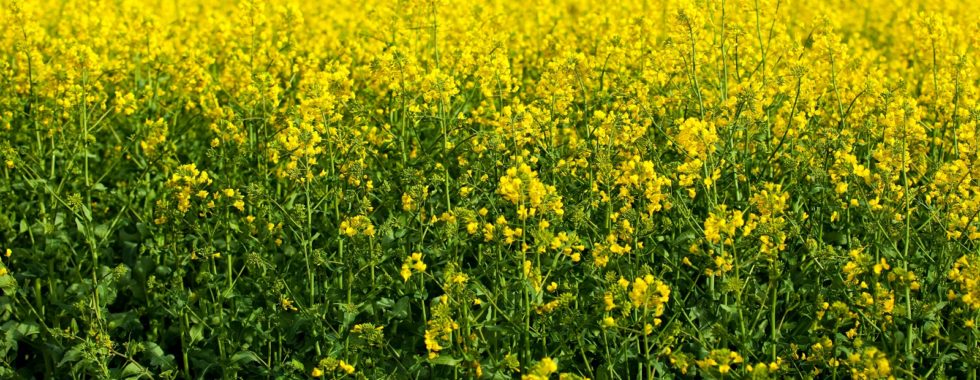How to choose the best cover crop
Cover crops play a significant role in the farmer’s field. Typically, cover crops are planted between harvests or for winter protection. They are considered temporary plants that provide many benefits for the cash crop and the soil and usually are not intended to be harvested as a crop. However, some cover crops, such as wheat, barley and oats can also be harvested and sold.
Benefits of planting cover crops
Cover crops provide numerous benefits to the soil and overall crop production. They can improve soil structure and fertility, reduce erosion, and suppress weeds, among other benefits.
Firstly, cover crops increase diversity in the agricultural ecosystem. Cover crops can provide habitat and food for beneficial insects, birds, and other wildlife, which can help to improve the overall health of the ecosystem.
Cover crops can also help to enhance soil properties, such as structure and fertility. By covering the soil and protecting it from erosion and compaction, cover crops can help to improve the structure of the soil and make it more porous and easier for plants to root in. Furthermore, they can also add nutrients to the soil, such as nitrogen, through the process of nitrogen fixation, which involves converting atmospheric nitrogen into a form that plants can use. Cover crops can be useful for enhancing soil fertility by adding organic matter and preventing soil degradation, leading to increased microbiological activity and humus content in the soil.This can help to improve soil fertility and support the growth of main crops.
In addition to improving soil fertility, cover crops can also help to suppress weeds. By competing with weeds for light, water, and nutrients, cover crops can help to reduce the number and vigor of weeds in a field. This can help to improve crop yields and reduce the need for herbicides.
Considerations in choosing a cover crop
There are several considerations to keep in mind when choosing a cover crop. One important factor is the climate and soil conditions of the area where the cover crop will be grown. Some cover crops may thrive in certain climates or soil types, while others may struggle or be less effective. It is important to choose a cover crop that is well-suited to the local conditions to ensure its success.
Another consideration is the intended purpose of the cover crop. Some cover crops may be primarily used for erosion control, while others may be selected for their ability to fix nitrogen or add organic matter to the soil. It is important to choose a cover crop that will meet the specific needs of the farming operation.
In addition, the timing of cover crop planting and incorporation should be taken into account. Some cover crop species may be more suitable for planting in the fall, while others may be better suited for spring planting. It is important to choose a cover crop that will fit into the existing crop rotation schedule and not interfere with the growth and harvest of main crops.
Types of cover crops
There are many different types of cover crops, including grains, legumes, broadleaves, and brassicas.
Grains are a type of cover crop that includes cereals such as oats, wheat, and rye. These crops are fast-growing and can be used to cover bare soil quickly. Grains can help to suppress weeds and add organic matter to the soil. In addition, they can break up soil compaction due to their extensive root systems. They can also improve water infiltration by slowing down the rate of rain drops or overhead irrigation.
Legumes are another type of cover crop that includes plants such as beans, peas, and clovers. Legumes have the ability to fix nitrogen from the air and add it to the soil, which can help to improve soil fertility and support the growth of main crops.
Broadleaves are a diverse group of cover crops that includes plants such as mustard, clover, buckwheat and turnips. These crops can help to suppress weeds, improve soil structure, and add organic matter to the soil.
Brassicas are a type of cover crop that includes plants such as radishes, turnips, and mustards. These crops are fast-growing and can help to break up compacted soil and add organic matter to the soil.
Cover crops include a diverse array of species and plant types, and they can be used at various times of the year.
Cool-season or Winter/Autumn cover crops are best planted in the fall on crop fields, or overseeded into dormant warm-season perennial grass pastures. Warm-season cover crops, however, are usually planted in the spring.
Warm-Season Crops
- Brassicas
- Browntop Millet and Foxtail Millet
- Buckwheat
- Cowpeas
- Flax
- Guar
- Mungbeans
- Okra
- Pearl Millet
- Sorghum Species
- Soybeans
- Sunflowers
- Sunn Hemp
Secondary Warm-Season crops
Other cover crop species may perform well in the warmer seasons. This will depend on the environment and your goals for the cover crop. The secondary choices include grazing corn, sweet clover, oats, chicory and squash.
Cool-Season Crops
- Barley
- Brassicas
- Crimson Clover
- Oats
- Rye
- Triticale
- Vetch
- Wheat
- Winter Pea
Secondary Cool-Season Species
As with the secondary warm-season species, other cool-season species may perform well in the cool season. Again, they depend on the environment and your goals for the cover crop. Secondary choices include several different clovers (rose and white, arrowleaf and persian), ryegrass, flax, chicory, and winter lentils
For more information or assistance on choosing the right cover crop for your farm, don’t hesitate to get in touch with our friendly team at Cropaia today.







